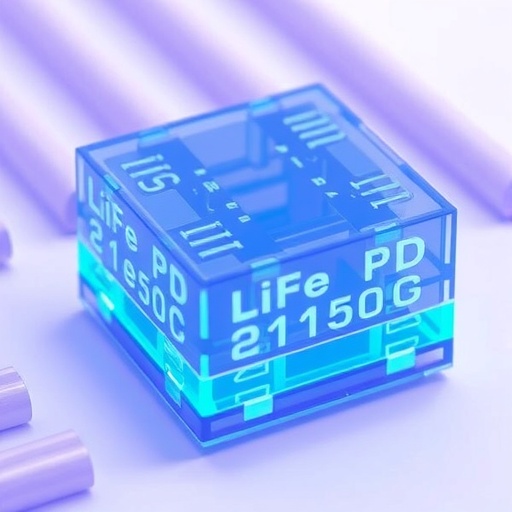In recent years, the field of energy storage has been revolutionizing due to the growing demand for efficient, high-capacity batteries. Among the various options, lithium iron phosphate (LiFePO4) electrodes have emerged as a front-runner due to their excellent thermal stability, long cycle life, and low cost. However, the challenge has always been to improve the overall performance of these materials, especially when used in combination with advanced manufacturing techniques like 3D printing. The study conducted by Nguyen et al. addresses these issues by investigating binder formulations and microstructural characteristics in very high loading 3D-printed LiFePO4 electrodes.
One critical factor in the performance of LiFePO4 electrodes is the binder material used during the 3D printing process. The binder acts as the glue that holds the active material together while also enabling the electronic conductivity necessary for battery function. Traditional binders often have limitations in terms of mechanical strength, thermal stability, and ionic conductivity. In their research, Nguyen and colleagues evaluated various binder formulations which not only improve the structural integrity of the electrode but also enhance its electrochemical performance.
Another innovative aspect of this research is the focus on microstructure optimization. Microstructure plays a vital role in determining the electrochemical behavior of the electrodes. In their investigation, the team examined how different microstructural designs affect ion transport and electron conduction within the electrode matrix. Through meticulous control of the printing parameters and raw material selection, the researchers were able to create electrodes with significantly improved microstructural characteristics compared to conventionally manufactured counterparts.
The use of 3D printing technology introduces a plethora of advantages, such as the ability to produce complex geometries and customized designs. These capabilities allow researchers to optimize the transport pathways for lithium ions, which is essential for enhancing charge and discharge rates. This flexibility in design enables the production of electrodes with tailored porosity and density, contributing to better overall performance.
Moreover, the research emphasizes the importance of achieving very high loadings of active material within the electrodes. Traditionally, the amount of active material that could be packed into a battery electrode was limited due to mechanical and electrochemical constraints. However, by modifying the binder and optimizing microstructure, Nguyen et al. have made strides in pushing these boundaries, making it possible to incorporate higher percentages of LiFePO4 without compromising performance.
To validate the effectiveness of their newly developed electrodes, the team conducted extensive electrochemical testing. They measured key performance indicators such as specific capacity, cycle stability, and rate capability. The findings revealed that their 3D-printed LiFePO4 electrodes not only matched but often exceeded the performance of their conventionally manufactured counterparts, demonstrating the potential of 3D printing in creating next-generation battery materials.
As battery technology progresses, environmental sustainability becomes a paramount consideration. The study conducted by Nguyen et al. also holds significance in the context of resource efficiency and recyclability. The research highlights how 3D printing can minimize waste during production while allowing the possibility for recyclable materials in binder formulations, thus contributing to a more circular economy in battery production.
In summary, the innovative work by Nguyen and colleagues paves the way for a new era in battery technology. By exploring binder formulations and optimizing microstructures in high-loading 3D-printed LiFePO4 electrodes, the research not only addresses existing limitations but also sets the stage for future advancements in energy storage solutions. As the demand for more efficient, sustainable, and high-performance batteries continues to rise, this study serves as a crucial building block for the development of next-generation energy storage systems.
The implications of their research extend beyond just the realm of lithium-ion batteries, touching on various applications including electric vehicles, renewable energy storage, and portable electronics. As these sectors expand, the need for more effective energy storage solutions will only become more pronounced, emphasizing the significance of the findings presented by Nguyen et al.
Looking forward, the potential for further innovations based on this research is vast. Future work could explore combinations of different materials, advanced additives, and superior processing techniques to push the boundaries of battery performance. Researchers are encouraged to build upon the insights gained from this study, fostering collaboration between academia and industry to bring these advanced technologies to market.
Overall, the work of Nguyen et al. represents a critical step towards realizing the full potential of LiFePO4 electrodes through the integration of 3D printing technology. The marriage of high-performance materials with cutting-edge manufacturing techniques positions these advancements at the forefront of energy storage innovation, setting the stage for a cleaner and more efficient future.
Subject of Research: High-performance LiFePO4 electrodes through 3D printing
Article Title: Binder formulation and microstructure in very high loading 3D-printed LiFePO4 electrodes.
Article References:
Nguyen, T.T.T., Hamed, H., D’Haen, J. et al. Binder formulation and microstructure in very high loading 3D-printed LiFePO4 electrodes. Ionics (2025). https://doi.org/10.1007/s11581-025-06753-9
Image Credits: AI Generated
DOI: https://doi.org/10.1007/s11581-025-06753-9
Keywords: LiFePO4, 3D printing, energy storage, battery electrodes, binder formulation, microstructure, electrochemical performance, high loading, sustainability.




